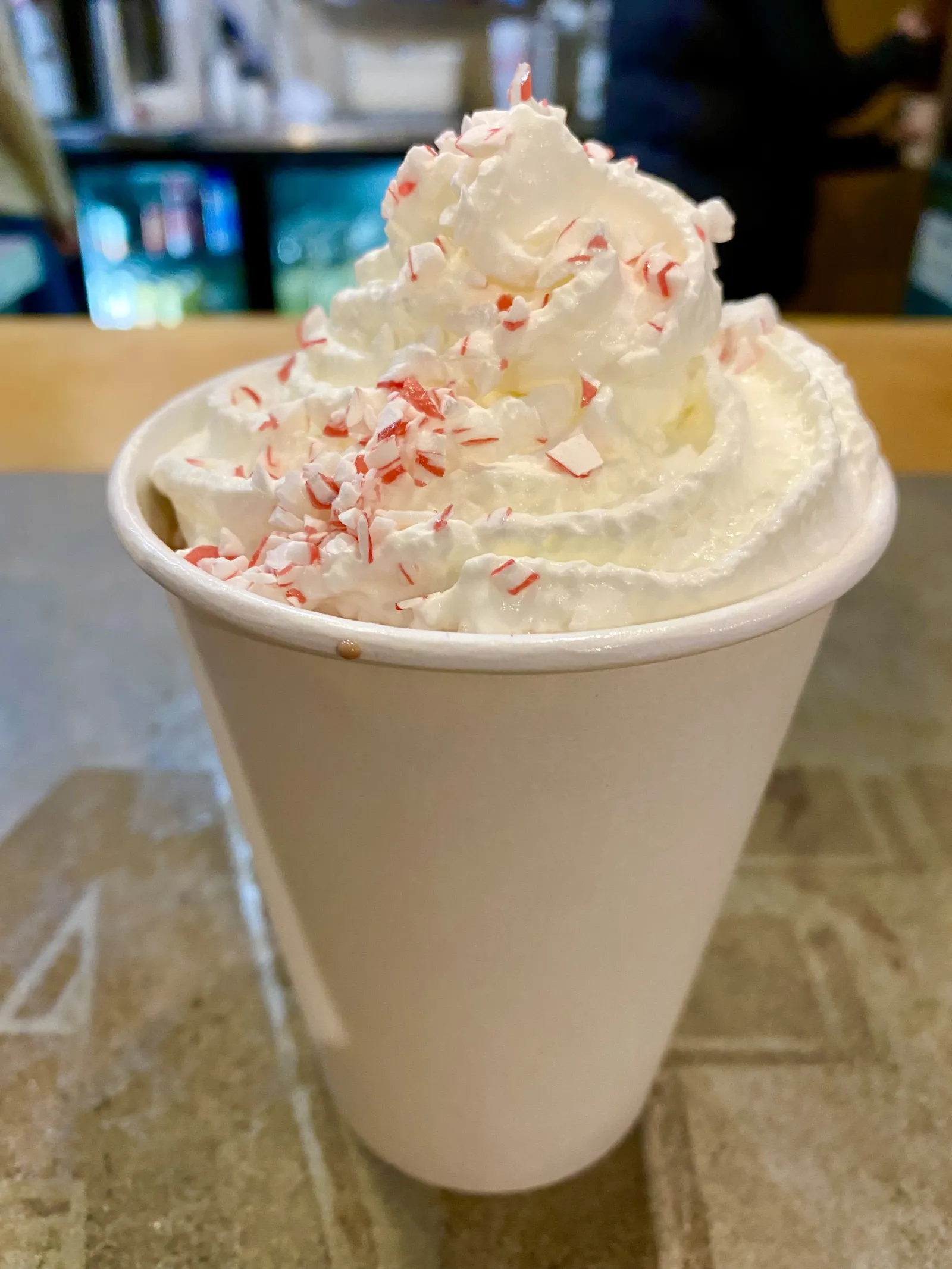Hot chocolate brings about thoughts of Hallmark holiday movies, hooded blankets, and cold winter nights.
Though its most common American iteration is a watered-down artificially cocoa-flavored elixir derived from a packet of dehydrated powder, it can also be much richer and thicker, served spiked, flavored, or even frozen, accented with marshmallows or crowned with whipped cream. In some countries, they even top their hot chocolate with cheese. Hot cocoa is a cool-weather icon—although it's readily available year-round, accessible everywhere from vending machines to coffeeshops to countertop microwaves.
Here's a look at where this liquid chocolate delicacy came from and why winter without hot chocolate would just be—cold.
Cool Beans!

Nowadays, chocolate is most frequently associated with bars and bonbons, but people were pouring and sipping chocolate long before they began molding and melting it. Centuries prior to the invention of solid chocolate blocks and tablets, ages before Nutella and chocolate mousse, and hundreds of years before Betty Crocker ever boxed up a chocolate cake mix, chocolate was consumed purely in liquid form.
The ancient ancestor of hot chocolate dates back thousands of years to the Aztec, Olmec, and Mayan cultures of what is today Mexico and Central America. Though made from cocoa, this early cocoa-based drink was neither hot nor very chocolatey—at least, not by today's Hershey-fied standards.
The word chocolate likely comes from the Aztec word caahuatl or the Mayan word xocōlātl, which, roughly translated, means "bitter water"—an apt title for this pungent brew. Around 500 B.C., or perhaps even earlier, the Aztecs and Maya began making a bitter and spicy chocolate drink known as chocolatl by first making a paste out of roasted and ground cocoa beans, cornmeal, chili peppers, and spices such as vanilla. They would then add water, pour it back and forth from pot to cup until frothy, and serve it cold. Sugar was still an unheard-of commodity in those days, so the cool, unsweetened beverage was a far cry from a warm mug full of Nestlé.
Despite the rather un-Godiva-like flavor of the beverage, chocolatl was very popular and enjoyed by the masses—though some say it was bad luck for a commoner to drink it. But even then, chocolate was considered a luxury, and cocoa beans held value. The Aztecs and Maya gave them as gifts on important occasions or used them to purchase goods.
In the early 1500s, the Mexican emperor Montezuma gave chocolatl further renown. He drank it out of golden goblets, sipping a chalice full before visiting the ladies of his harem and thus starting the longstanding rumor that chocolate is an aphrodisiac.
It was Montezuma who introduced Hernán Cortés—Spanish explorer, conquistador, and eventual chocoholic—to chocolatl. While Cortés was visiting Mexico to conquer the entire Aztec empire and bring it under Spanish rule, he and the emperor apparently set aside their differences and raised a glass to colonization with a cup of cold chocolate. Cortés returned to Spain with a boatload of cocoa beans and equipment to make the chocolate drink. He and Christopher Columbus, who also loaded up on cocoa beans during his expeditions, are both credited for bringing chocolate over to Spain.
Some Like it Hot
Once the Spanish discovered chocolatl, the drink was on a fast track to Swiss Miss. At first, they continued making it cold and bitter—sometimes adding pepper, cinnamon, and even beer or wine. But by the 1600s, sugar replaced chilis, and the beverage was sweetened and heated. Hot chocolate as we know it today was born. It was still an extravagance at that point, since only the Spanish well-to-do could afford the cocoa beans that had to be imported all the way from South America. In fact, when Spanish nobility got married, they often gave cocoa as a dowry.
Hot chocolate quickly spread all over Europe and was especially popular in London, where it rivaled tea as the drink of choice. In 1657, the first chocolate house—the hot chocolate equivalent of a coffeehouse—opened there. By the 1700s, writers and politicians regularly hung out in these café-style chocolate-drinking establishments, despite the fact that chocolate cost between $60 and $87 per pound by modern standards. In 1765, chocolate finally arrived in the U.S., and the first chocolate factory was opened in Dorchester, Massachusetts.
Death by Chocolate
In the 17th century in both Mexico and Spain, it was common for socialite women to serve the earlier, colder version of hot chocolate in the middle of mass services. The Catholic Church officially objected, challenging the nutritional validity of the beverage. In 1648, the bishop of Chiapas, Mexico, likewise tried to forbid the practice, since he found the good ladies' chocolate consumption disruptive to his preaching. The women were so upset that they allegedly sent him poisonous chocolate, which he drank and then quickly dropped dead.
Drink to Your Health
Throughout history, both hot chocolate and its predecessor have been said to provide a slew of health benefits. Cocoa is a supposed cure-all, used to treat everything from stomach ailments to liver disease to tuberculosis and postnasal drip. It provides energy and improves skin appearance. Hot chocolate was once used as a laxative and, despite the seeming contradiction, ground cocoa beans were also said to fight dysentery. Chocolate also supposedly helps with menstrual problems, encourages fornication, increases fertility—which then promotes conception—and, finally, allows for an easy delivery of the chocolate-induced child.
Chocolate has more antioxidants than both red wine and green tea—even more so when it's heated—and is therefore rumored to decrease heart disease. And when choc-olate first arrived in France in the 1600s, it allegedly helped fight temper tantrums and reduced crankiness. But who doesn't feel better after a nice cup of cocoa?

